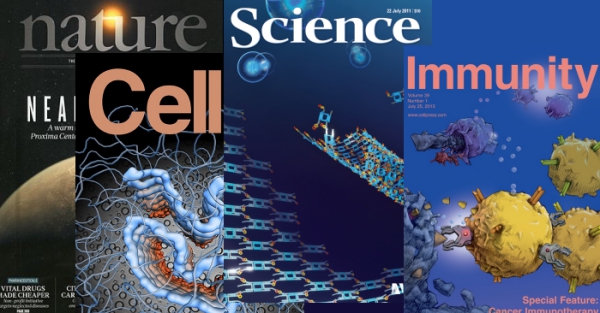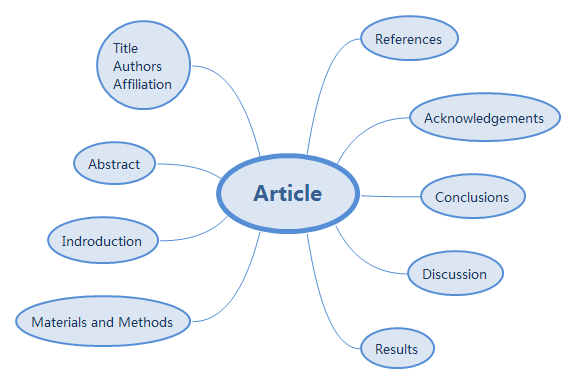The Ultimate Guide for A High Impact SCI Paper
We cannot put too much emphasis on the importance of publishing several high impact SCI papers successfully. If the journals are top ones like Nature, Science, Cell, Advanced Materials, it couldn't be better. However, it is not easy to do it.
The acceptance rate of a paper in many journals keeps dropping. Take Nature as an example. From 1997 to 2001, the acceptance rate was more than 10.6% . In 1998, it was as high as 12.1%. It was as low as 7.6% in 2017. Therefore, the difficulty can be well imagined.
But don't get too discouraged. High challenges always bring high value. This article will show you all details of publishing a high impact paper and offer some practical suggestions, which will bring you a good start of your journey.
The outline of this guide.
1. How to Write A High
Impact SCI Paper?
1.1 Basic
Writing Principles
Here are four principles, 4Cs, which are based on the serious attitude and rigorous logical thinking ability of researchers.
* Clear
Clear thinking, clear concept, clear expression.
* Complete
Complete content, complete and well balanced structure.
* Correct
Correct knowledge, correct data, no errors on expressions and grammars.
* Concise
Profoundly discourse, fully reveal the scientific connotation and use frequently quantitative methods.
1.2 Main Parts of A SCI Paper
Having an in-depth understanding of every part of a paper is required before you get start. A research paper usually includes the following 9 parts.
You will start to write after determining the subject. In fact, it is not a good idea to begin with abstract part. It is easy to get off the subject. After doing deep research, we find the following writing order is more efficient.
1.4 Writing Skills of the 9 Parts
The essence of a paper is its subject and experimental data. But good writing skills can always help you to write and publish a great paper. Here we will focus and discuss the writing skills for every part of a SCI paper.
* Materials & Methods
This step is mainly to state what experiments have been done to solve the problems mentioned in the introduction. It would be better to set a subheading for each method so that the content is clear at a glance.
Since the methods and results are consistent with each other, thus the biomarkers in the results and the measurement methods should be displayed in the article. However, descriptions about markers which have nothing to do with the results should not appear in the methods.
The method which has been published should quote the references. If any improvement is needed, it should be pointed out.
Statistical method should be described in a separate paragraph. And the statistical software, analysis methods of specific value, plotting methods and meaning of P value, ect, should be figured out.
First, show the background of the research field and points out the existing problems in the field.
And then, combine with the recent published literature, analyze the current research status of the problems. Point out the existing gap. Propose what to do on how to solve the gap.
Finally, list the main research aims and meaning of the research. More details are not necessary in this part.
* Results (Figures & Tables)
What has been found should be listed out in the results.
Adopt subtitle form. Keep the content of results in accordance with above methods.
Keep the descriptions of results in accordance with charts and diagram.
List the specific data if any results with specific values.
Add some illustrative sentences which can help understand and attach reference.
* Discussion
Discussion is probably the most important part. Thousands of manuscripts are rejected because of the problems in this part. And it is very hard to write it in a right way. You can try the following steps.
Firstly, the important results of the research are listed in the first paragraph.
Secondly, discuss further relevance between biomarkers in the important results and the subject. The defects and highlights of the research can be pointed out.
Thirdly, comes to conclusions.
Here are tips for the above steps.
Keep the Discussion corresponding to the Results, but do not reiterate the results.
Do not overdo on the depth of discussion and avoid digressing from the subject.
Avoid unspecific expressions. Presenting an accurate description is required.
Discussion is usually a speculation of the results. But it should be rooted in fact or previous research, rather than imagination.
* Conclusions
The conclusion often makes a separate paragraph, pointing out the main results and significance.
The conclusion is highly generalized results, highlighting the innovation and significance of the research.
The conclusion is conjecture from the discussions. Thus avoid to use affirmative words. Some hypothetical or suggestive vocabulary is better, such as suggest, might, may, ect.
* Title
The title should reflect the core content of the research.
keep it informative and concise.
Try your best to use keywords which reflects the research, to ensure the title can be searched easily.
Use normative words and avoid abbreviations.
* Abstract
Structural abstract usually include research purpose, methods, results as well as conclusions.
No over words. It is better limited in 300 words.
List the key results and make the description concise.
Several sentences about background can be added in the descriptions of research purpose.
Since the abstract is a concise summary of the whole paper, it is best to write the abstract after the body of the paper is completed, although it is at the beginning of the paper.
* References
Cite the most relevant and latest reference.
Select reference well and no too much.
Cite the published reference to public. The articles in internal journals and materials for internal use, especially materials which cannot be disclosed to public, are not recommend as references.
2. How to Publish A High Impact SCI Paper?
2.1 Choose the Right Journal
Make sure your paper fits within the scope of the journal
Assess the credentials of the journal or publisher
Browse the content they publish for quality and relevance to your field
Check the quality of their website
Check the latest journal impact factor (JIF)
Check what tools and services they offer to authors
Submit your research to one journal only, but check if they offer transfers to other journals
2.2 Do Enough Preparation before Submitting
* Read all requirements of the chosen journal. Make sure your manuscript meet all of them.
* Ask a colleague or professor who is also doing the related research to review your manuscript.
* Revise the manuscript very carefully. Make sure there are no errors in it.
2.3 Submit Your Manuscript When You Are Ready
* Submit your article to only one journal at a time.
* Use an email address with your university website domain when submitting online
2.4 How to Deal with Replies after Submitting?
Here are the review process of many journals. You may not feel so anxious after knowing the process.
* First review
For manuscripts submitted through official channels, the editorial office will generally register them and arrange for the editor of the relevant column to examine whether the format and content of the paper are suitable for them to publish it.
The timing of the first review by the editor varies slightly from journal to journal, mostly around 10-30 days.
* External Expert Audit
Most journals have External Expert Audit team. The manuscripts without problems in the first review will be sent to the experts in an anonymous way so that they can determine the latest status of the study and the correctness of the results. External Expert Audit is a core review process for many journals, and it generally takes 1 to 2 months.
* Final review of Chief Editor
If the manuscript approved by the External Auditor will be sent to the chief editor for final review. It is the last part of the process. Some top journal will maintain a certain rate of rejection.
Now SCI articles have a stricter review process than ever before. If the JIF is more than 2, the article will be be assigned 3 reviewers (including statistical experts) after submission. The higher JIF, the more reviewers to control the article quality.
The reviewer primarily audit the article according to the PICOS (participants, intervention, control, outcome, study design)choice, innovation, bias control, interpretation & presentation of the study results, and grammar.
After the review is completed. You will get replies.
* Accept with Revision — The article has no critical defects and only a few paragraphs or word expression need to adjust based on the provided feedback by the reviewers.
* Revise and Resubmit — The main reasons are weak innovation, incomplete grouping and main data, wrong research methods and statistical errors. But the journal is still very interested in your work. You will have lots of work to do before resubmitting.
* Reject and Resubmit — the article is not currently viable for consideration, but substantial alterations and refocusing may be able to change this outcome.
* Reject — the paper isn't and won't be suitable for this journal, but that doesn't mean it might not work for another one. It is time to try another journal.
SCI, short for Science Citation Index, is a journal and literature retrieval tool published by the American Institute of Scientific Information (ISI), which comprehensively covers the world's most important and influential research results. Therefore, SCI papers are one of the standards to test the level of scientific research. The number of SCI papers also serves as a reference for academic evaluation of college students, and is one of the evaluation criteria for professional title promotion of scientific research workers. So creating a perfect paper and publishing it in the SCI journal is a fundamental and necessary skill for scientific research workers.
Those above are knacks how to finish and publish a high-impact SCI paper. Hope they could help the clueless novice or the thinker who are scratching his or her head for a SCI paper.
Cite this article
CUSABIO team. The Ultimate Guide for A High Impact SCI Paper. https://www.cusabio.com/c-20672.html







Comments
Leave a Comment